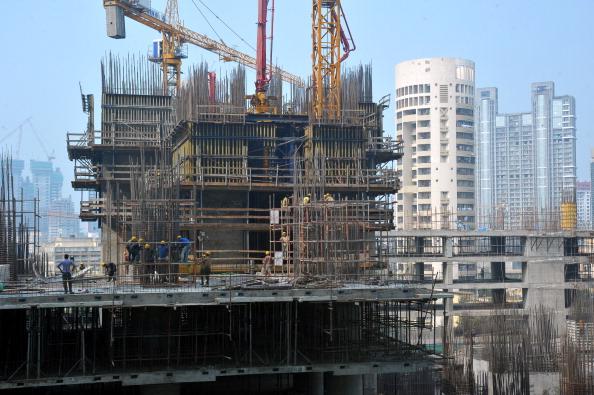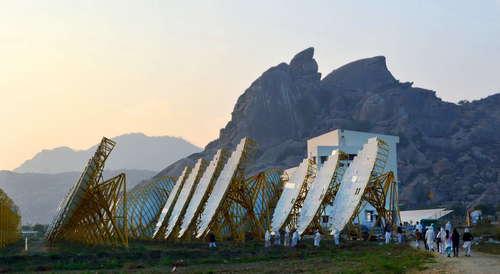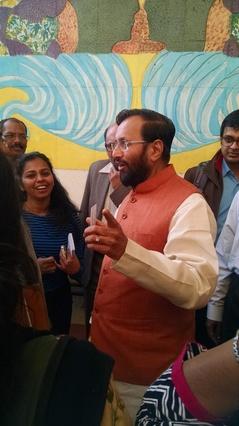While in Mumbai recently, home of Mahindra headquarters, the sounds of construction are an ever-present soundtrack for the city. More than ever, people are flocking to India’s cities, where increasing standards of living and rapid urbanization are causing enormous strain on the country’s energy supplies. At the same time, 400 million people in India lack any access to reliable power and much of the population remains vulnerable to the effects of climate change.
Today, our NRDC team and our partner, the Administrative Staff College of India (ASCI), are releasing our latest business case study highlighting a key solution to these varied but serious problems: saving energy by incorporating energy efficient measures into India’s building stock.
Energy efficiency is the fastest, cheapest, and cleanest way for India to sustainably match its energy demands and avoid a severe energy crisis. Avoiding excess energy use also opens up opportunities to provide electricity to the large segment of India’s population that currently has no or unreliable access to energy.
This case study, Retrofitting Mahindra Towers: How an Innovative ESCO Model Lowers Energy Bills with No Upfront Costs, supported in part by Shakti Sustainable Energy Foundation, profiles a leading Indian company who retrofitted their headquarters’ lighting and cooling systems with energy efficiency measures. As was proven in our past case studies, energy efficiency is a smart business decision that continues to produce real savings for companies in India. What makes this case study stand out is the ESCO model utilized by Mahindra.
By working with an energy servicing company (ESCO), Mahindra avoided making any upfront payments for the energy efficiency improvements but rather made payments over time through its energy savings -- leading to a payback period of under six months. The Mahindra Towers retrofit demonstrates unequivocally that working with an ESCO to implement energy conservation mechanisms is practical and profitable in India’s rapidly transforming building market.

Mahindra Towers post-retrofit. Photo used with permission from Mahindra & Mahindra.
Many companies remain unaware that the money they save from lower energy bills can quickly pay for the incorporated energy efficiency measures. Others are deterred by the upfront investment required or are unsure how to start the process of even identifying where to cut costs. As Mahindra experienced first-hand, working with an ESCO can provide the professional expertise needed to identify how the building can save energy and even minimize the risks associated with such investments.
To update its headquarters’ lighting and cooling systems, Mahindra worked with ENCON Energy Management Services, an ESCO with over a decade of experience working on energy issues and certified by the Bureau of Energy Efficiency (BEE). Mahindra relied on ENCON’s experience and expertise to identify the best potential energy efficiency improvements. Mahindra then selected the improvements that made the most sense for its needs.
But the relationship didn’t end there. ENCON also took care of the upfront investment in the efficiency measures and recovered the investment from Mahindra recouped from the buildings’ energy savings over the next three years. Mahindra took on almost no cost and investment risk during the project’s early stages, while also tapping into ENCON’s expertise. And the payback period for the total Rs. 19 lakh ($40,000) invested in the project was incredibly fast: less than six months.
“It was the first time that we could get buy-in from people in the company to show that energy efficiency pays. For us, the ESCO was an enabler to validate our claim and show that energy efficiency is a good business case. We changed the mindset at the company through this retrofit and we would recommend it [the ESCO model] to other companies.”
~ Ms. Beroz Gazdar, Sr. Vice President - Group Sustainability, Mahindra & Mahindra
Expanding such ESCO-client relationships won’t just save money for building owners and developers, it can also have positive national repercussions. Other fast developing countries such as Brazil and China have ESCO markets that are 16% and 7% larger, respectively, than India’s. Harnessing the business potential for ESCOs in India can provide the support and expertise needed for the country’s new and existing buildings to take on many energy efficiency projects, as well as mitigate the investment risk and upfront costs hampering widespread adoption currently.
This case study proves that energy efficiency quickly pays for itself and there are innovative models and support available to enable India’s cities to lock in these energy savings now. As India’s energy needs rise to keep pace with the growing economy and rapid urbanization, using less energy to power the country’s buildings is a smart solution available to most businesses. ESCOs can help Indian companies and real estate developers tap into this underutilized but incredibly valuable resource.
Co-authored by Meredith Connolly, NRDC Energy Law & Policy Fellow
This article was originally written and published by Anjali Jaiswal, a contributing blogger for www.switchboard.nrdc.org. For the original story and more information, please click HERE.





